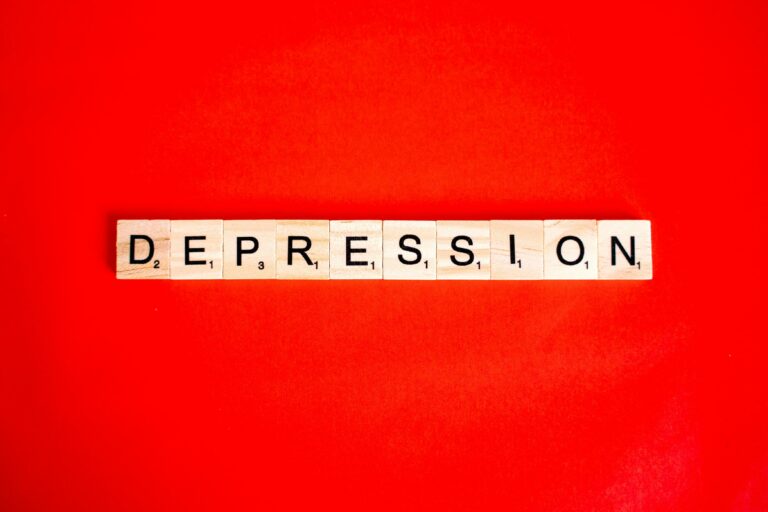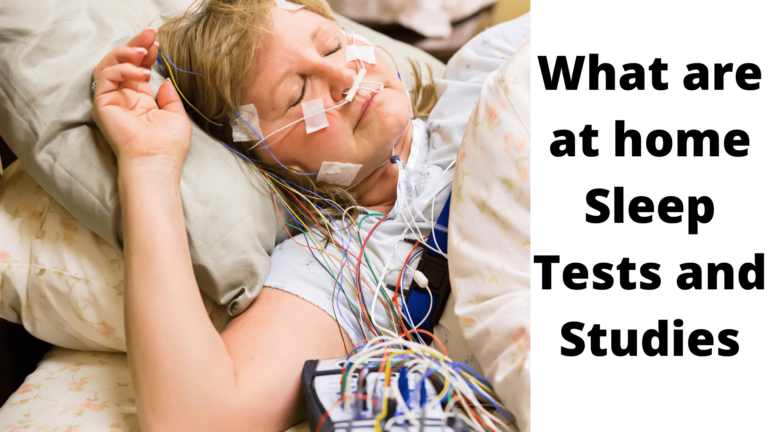Are you struggling with sleep disorders that are negatively impacting your health and productivity? Restless Leg Syndrome could be one of the culprits. At Vector Sleep Clinic, conveniently located in the heart of Rego Park and easily accessible from all 5 boroughs, we understand the importance of uninterrupted sleep for overall well-being. With licensed and insured professionals, we offer reliable and trustworthy solutions to help you unlock the magic of restful nights, where dreams meet rejuvenation. By completing a sleep study at our clinic, you can address the underlying causes of your sleep disorder and prevent serious health issues such as heart attacks, strokes, and high blood pressure. Let us provide you with comprehensive care for a restful sleep and a healthier life.
Overview of Restless Leg Syndrome
Restless Leg Syndrome (RLS) is a neurological disorder characterized by uncomfortable sensations in the legs, often accompanied by an uncontrollable urge to move them. These symptoms typically occur during rest or sleep, making it difficult for individuals to get the rest they need. The exact cause of RLS is not fully understood, but it is believed to involve a combination of genetic factors, neurological imbalances, iron deficiency, pregnancy, and chronic diseases.
Definition and Symptoms
Restless Leg Syndrome is defined by the International Restless Legs Syndrome Study Group as “an urge to move the legs, usually accompanied by uncomfortable and unpleasant sensations in the legs.” These sensations are often described as crawling, tingling, burning, aching, or throbbing. The symptoms of RLS typically worsen at night, leading to sleep disturbances and daytime fatigue.
Prevalence and Demographics
Restless Leg Syndrome is a fairly common condition, affecting approximately 5-15% of the population. It can affect individuals of all ages, but it is more common in middle-aged and older adults. Women are more likely to develop RLS than men, and individuals with a family history of the condition are also at a higher risk.
How Restless Leg Syndrome Affects Quality of Life
Restless Leg Syndrome can have a significant impact on an individual’s quality of life. The uncomfortable sensations and urge to move the legs can make it difficult to fall asleep or stay asleep, leading to chronic sleep deprivation. This can result in daytime fatigue, difficulty concentrating, and reduced productivity. RLS can also interfere with daily activities and social interactions, leading to feelings of frustration and isolation.
Understanding the Causes of Restless Leg Syndrome
While the exact cause of Restless Leg Syndrome is unknown, several factors have been identified as potential contributors to the development of the condition.
Genetic Factors
There is evidence to suggest that genetics play a role in Restless Leg Syndrome. Studies have found that individuals with a family history of the condition are more likely to develop RLS themselves. Researchers have identified several genes that may be associated with an increased risk of RLS, although more research is needed to fully understand their role.
Neurological Imbalances
Restless Leg Syndrome is believed to involve an imbalance of dopamine, a neurotransmitter that plays a role in controlling muscle movement. Low levels of dopamine or abnormalities in the dopamine receptors may contribute to the development of RLS symptoms. Other neurotransmitters, such as glutamate and opioids, may also be involved in the regulation of RLS symptoms.
Iron Deficiency
Iron deficiency is another potential cause of Restless Leg Syndrome. Iron is essential for the production of dopamine, and low iron levels can lead to decreased dopamine levels in the brain. This can disrupt the normal functioning of the dopamine pathways, contributing to RLS symptoms. Iron deficiency can be caused by a variety of factors, including poor dietary intake, gastrointestinal disorders, and chronic diseases.
Pregnancy
Restless Leg Syndrome is more common in pregnant women, particularly during the third trimester. Hormonal changes, increased blood volume, and changes in iron metabolism during pregnancy may contribute to the development or worsening of RLS symptoms. The symptoms usually improve after childbirth, but they may persist in some cases.
Chronic Diseases
Certain chronic diseases, such as kidney failure, diabetes, and peripheral neuropathy, have been associated with an increased risk of Restless Leg Syndrome. The exact mechanisms through which these diseases contribute to the development of RLS are not fully understood, but it is believed that they may affect the nervous system or iron metabolism, leading to RLS symptoms.
Diagnosing Restless Leg Syndrome
Diagnosing Restless Leg Syndrome can be challenging, as there is no specific test or biomarker for the condition. Instead, healthcare professionals rely on clinical criteria, assessment tools, and questionnaires to evaluate the presence and severity of RLS symptoms.
Clinical Diagnosis Criteria
The International Restless Legs Syndrome Study Group has established four essential criteria for diagnosing Restless Leg Syndrome:
- An urge to move the legs, usually accompanied by uncomfortable sensations.
- The urge to move the legs gets worse during periods of rest or inactivity.
- The urge to move the legs is partially or totally relieved by movement.
- The urge to move the legs worsens in the evening or at night.
To meet the diagnosis, these symptoms must occur at least three times per week and persist for at least three months.
Assessment Tools and Questionnaires
In addition to the clinical diagnosis criteria, healthcare professionals may use assessment tools and questionnaires to further evaluate the severity of Restless Leg Syndrome and its impact on an individual’s quality of life. These tools often involve rating scales or questionnaires that measure the frequency, intensity, and impact of RLS symptoms.
The Role of Sleep Studies
In some cases, healthcare professionals may recommend sleep studies to rule out other sleep disorders and evaluate the impact of Restless Leg Syndrome on sleep quality. Polysomnography, a test that records brain waves, oxygen levels, heart rate, and other physiological variables during sleep, can provide valuable information about the severity and impact of RLS symptoms on sleep architecture.
Treatment Options for Restless Leg Syndrome
Treatment for Restless Leg Syndrome aims to alleviate symptoms, improve sleep quality, and enhance overall quality of life. There are several treatment options available, including medications, lifestyle changes, physical therapy exercises, and alternative medicine approaches.
Medications
Medications are often the first line of treatment for Restless Leg Syndrome, particularly for individuals with moderate to severe symptoms. The most commonly prescribed medications for RLS include dopaminergic agents, benzodiazepines, opioids, and anticonvulsants. These medications can help reduce the frequency and intensity of RLS symptoms, allowing for better sleep and improved quality of life.
Lifestyle Changes and Home Remedies
Making certain lifestyle changes and implementing home remedies can also be beneficial in managing Restless Leg Syndrome. Practicing good sleep hygiene, such as maintaining a regular sleep schedule and creating a comfortable sleep environment, can help improve sleep quality. Engaging in regular physical exercise, avoiding caffeine and alcohol, and applying heat or cold to the legs can also provide relief from RLS symptoms.
Physical Therapy Exercises
Physical therapy exercises, specifically targeted at improving circulation, muscle strength, and flexibility, can help alleviate Restless Leg Syndrome symptoms. Exercises such as walking, cycling, swimming, and yoga can promote overall leg health and reduce the frequency and intensity of RLS symptoms. Working with a physical therapist can ensure that exercises are performed correctly and safely.
Alternative Medicine Approaches
Some individuals with Restless Leg Syndrome find relief from complementary and alternative medicine approaches. Acupuncture, for example, has been shown to reduce RLS symptoms and improve sleep quality in some individuals. Massage therapy, mindfulness techniques, and relaxation exercises can also help manage RLS symptoms and improve overall well-being. It’s important to note that these approaches may not work for everyone, and it’s essential to consult with a healthcare professional before trying any alternative treatments.
Medications Used in Treatment
Medications play a crucial role in the management of Restless Leg Syndrome, particularly for individuals with moderate to severe symptoms. Several different classes of medications have been found to be effective in reducing RLS symptoms.
Dopaminergic Agents
Dopaminergic agents, such as pramipexole and ropinirole, are commonly prescribed for the treatment of Restless Leg Syndrome. These medications work by increasing dopamine levels in the brain, alleviating the uncomfortable sensations and urge to move the legs associated with RLS. They are typically taken in the evening, as RLS symptoms often worsen at night.
Benzodiazepines
Benzodiazepines, such as clonazepam and diazepam, are another class of medications used to treat Restless Leg Syndrome. These drugs have sedative and muscle relaxant properties, which can help promote sleep and reduce RLS symptoms. However, they are generally reserved for individuals with severe RLS symptoms due to their potential for side effects and the risk of dependence with long-term use.
Opioids
In some cases, opioids may be prescribed for individuals with severe symptoms of Restless Leg Syndrome that do not respond to other treatments. Opioids work by binding to opioid receptors in the brain and spinal cord, reducing the perception of pain and providing relief from RLS symptoms. However, due to the potential for dependence and abuse, opioids are generally used as a last resort and only under close medical supervision.
Anticonvulsants
Certain anticonvulsant medications, such as gabapentin and pregabalin, have shown promise in the treatment of Restless Leg Syndrome. These drugs work by reducing abnormal electrical activity in the brain and may help alleviate RLS symptoms. Anticonvulsants are often used as adjunct therapy in combination with other medications to enhance their effectiveness.
Lifestyle Modifications for Managing Symptoms
In addition to medications, making certain lifestyle modifications can help manage Restless Leg Syndrome symptoms and improve overall quality of life.
Sleep Hygiene
Practicing good sleep hygiene is essential for individuals with Restless Leg Syndrome. This includes maintaining a regular sleep schedule, creating a comfortable sleep environment, and establishing a relaxing bedtime routine. Avoiding stimulating activities and electronics before bed and ensuring the bedroom is dark, quiet, and at a comfortable temperature can promote better sleep quality and reduce RLS symptoms.
Dietary Considerations
Certain dietary considerations can play a role in managing Restless Leg Syndrome symptoms. It is recommended to consume a balanced diet rich in iron, magnesium, and folate, as deficiencies in these nutrients can exacerbate RLS symptoms. Including foods such as leafy green vegetables, nuts, seeds, and legumes can help ensure an adequate intake of these essential nutrients. It is also advisable to limit or avoid caffeine, as it can worsen RLS symptoms.
Exercise and Activity Recommendations
Regular exercise and physical activity can help reduce Restless Leg Syndrome symptoms and improve overall leg health. Engaging in activities such as walking, cycling, swimming, and yoga can promote circulation, muscle strength, and flexibility, which can lead to a reduction in RLS symptoms. It is important to find activities that are enjoyable and sustainable, and to consult with a healthcare professional before starting any new exercise regimen.
Avoiding Trigger Substances
Certain substances, such as caffeine and alcohol, have been found to worsen Restless Leg Syndrome symptoms. It is advisable to limit or avoid these substances, especially in the evening, to minimize RLS symptoms. Smoking is also associated with increased severity of RLS symptoms, so quitting smoking can be beneficial for individuals with Restless Leg Syndrome.
Role of Exercise in Alleviating Symptoms
Exercise plays a significant role in alleviating Restless Leg Syndrome symptoms and improving overall well-being. Regular physical activity can help promote circulation, reduce muscle tension, and improve sleep quality, which can all contribute to a reduction in RLS symptoms.
Recommended Types of Exercise
Certain types of exercise have been found to be particularly beneficial in managing Restless Leg Syndrome symptoms. Aerobic exercises, such as walking, running, cycling, and swimming, can promote circulation and cardiovascular health. These activities can also release endorphins, which are natural pain-relieving chemicals that can help alleviate RLS symptoms. Incorporating exercises that focus on leg strength and flexibility, such as yoga or resistance training, can also be helpful.
Timing and Frequency of Exercise
Timing and frequency of exercise are important considerations for individuals with Restless Leg Syndrome. Engaging in moderate-intensity exercise earlier in the day can help regulate the sleep-wake cycle and promote better sleep at night. It is generally recommended to aim for at least 150 minutes of moderate-intensity exercise or 75 minutes of vigorous-intensity exercise per week. However, it is important to listen to your body and not overexert yourself, as excessive exercise can worsen RLS symptoms.
Exercise Precautions and Safety
While exercise can be beneficial for individuals with Restless Leg Syndrome, it is important to take certain precautions and ensure safety. It is advisable to start with low-intensity exercises and gradually increase intensity and duration as tolerated. Engaging in proper warm-up and cool-down exercises can help prevent injury and reduce muscle soreness. Individuals with severe RLS symptoms or underlying medical conditions should consult with a healthcare professional before starting an exercise program and may benefit from working with a fitness professional.
Impact of Diet on Restless Leg Syndrome
Diet can play a significant role in managing Restless Leg Syndrome symptoms and promoting overall well-being. Several nutrients have been found to be important in the management of RLS.
Importance of Iron, Magnesium, and Folate
Iron, magnesium, and folate are essential nutrients that play a crucial role in the regulation of leg movements and overall muscle health. Iron is necessary for the production of dopamine, a neurotransmitter involved in RLS symptoms. Magnesium is involved in muscle relaxation and can help alleviate muscle cramps and twitches associated with RLS. Folate is involved in the production of red blood cells and can help prevent iron deficiency anemia, which can worsen RLS symptoms.
Foods to Include and Avoid
Including foods rich in iron, magnesium, and folate in your diet can help manage Restless Leg Syndrome symptoms. Leafy green vegetables, legumes, nuts, seeds, whole grains, and lean meat are excellent sources of these nutrients. It is also important to ensure an adequate intake of other vitamins and minerals, such as vitamin B12 and zinc, which are necessary for proper nerve function and muscle health. On the other hand, it is advisable to limit or avoid caffeine, as it can worsen RLS symptoms.
Supplementation Strategies
In some cases, dietary changes alone may not provide sufficient levels of essential nutrients for individuals with Restless Leg Syndrome. In such cases, supplementation may be recommended under the guidance of a healthcare professional. Iron supplements can be beneficial for individuals with iron deficiency anemia, but they should be taken under medical supervision to avoid iron overload. Magnesium and folate supplements may also be considered, particularly for individuals with low dietary intake or absorption issues.
Alternative and Complementary Therapies
In addition to conventional treatments, some individuals with Restless Leg Syndrome find relief from alternative and complementary therapies. These therapies, while not supported by extensive scientific evidence, may provide symptomatic relief and improve overall well-being.
Acupuncture
Acupuncture, an ancient Chinese therapy involving the insertion of thin needles into specific points on the body, has shown promise in reducing Restless Leg Syndrome symptoms. It is believed that acupuncture helps balance the flow of energy, or Qi, in the body, which can alleviate RLS symptoms. Acupuncture sessions are typically performed by licensed practitioners and may require multiple sessions for optimal results.
Massage Therapy
Massage therapy can provide relief from RLS symptoms by reducing muscle tension, improving circulation, and promoting relaxation. Techniques such as Swedish massage, deep tissue massage, and trigger point therapy can help alleviate RLS symptoms and improve sleep quality. It is important to seek the services of a licensed and trained massage therapist for optimal results.
Mindfulness and Relaxation Techniques
Practicing mindfulness and relaxation techniques can help individuals with Restless Leg Syndrome better manage their symptoms. Mindfulness techniques, such as deep breathing, meditation, and body scanning, can help reduce stress and promote relaxation, which can alleviate RLS symptoms. Relaxation exercises, such as progressive muscle relaxation and guided imagery, can also be beneficial in managing RLS symptoms and improving sleep quality.
Future Directions in Research and Treatment
Research on Restless Leg Syndrome is ongoing, and there are several promising areas for future study and treatment development.
Emerging Therapies
Emerging therapies, such as transcranial magnetic stimulation (TMS) and transcutaneous electrical nerve stimulation (TENS), are being investigated for their potential in managing Restless Leg Syndrome symptoms. These therapies involve the use of non-invasive techniques to stimulate specific areas of the brain or nerves, which can help alleviate RLS symptoms. While more research is needed, these therapies show promise in providing alternative treatment options for individuals with RLS.
Genetic Research and Innovations
Advancements in genetic research can provide insights into the underlying mechanisms of Restless Leg Syndrome and potentially lead to more targeted and personalized treatment approaches. As researchers continue to identify genes associated with RLS, it may be possible to develop genetic tests that can predict an individual’s risk of developing the condition. This could facilitate early intervention and more tailored treatment plans.
Focus on Personalized Treatment Plans
Personalized treatment plans, taking into account an individual’s specific symptoms, underlying causes, and lifestyle factors, can greatly improve the management of Restless Leg Syndrome. As researchers gain a better understanding of the factors contributing to RLS, healthcare professionals can develop more individualized approaches to treatment. This may involve a combination of medications, lifestyle modifications, and alternative therapies tailored to the needs of each individual.
In conclusion, Restless Leg Syndrome is a common neurological disorder characterized by uncomfortable sensations in the legs and an urge to move them. The exact cause of RLS is not fully understood, but it is believed to involve a combination of genetic factors, neurological imbalances, iron deficiency, pregnancy, and chronic diseases. Diagnosis is based on clinical criteria and assessment tools, and treatment options include medications, lifestyle changes, physical therapy exercises, and alternative medicine approaches. Future research and innovations, including emerging therapies and genetic studies, offer promise for improving the understanding and treatment of Restless Leg Syndrome. By taking a comprehensive and personalized approach, individuals with RLS can manage their symptoms and improve their quality of life.






